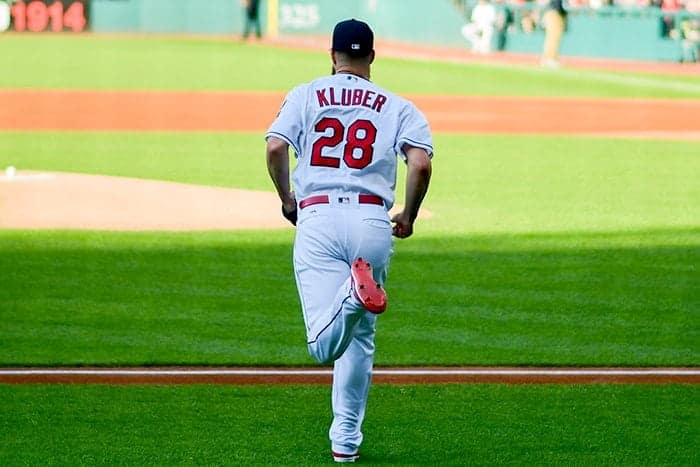When the White Sox wrecked Corey Kluber for the first time in years back on April 3, taking advantage of uncharacteristic glitches in the Klubot's control to knock him out in the fourth inning, it could be dismissed as an off day.
Two starts later, however, Kluber couldn't even get out of the third inning against the Royals. He allowed six runs on six hits and five walks over 2⅔ innings on Sunday. Four of those walks occurred in the third inning alone, which is reminiscent of his start against the White Sox where he couldn't recalibrate himself on the mound. His 6.16 ERA accurately reflects his struggles.
And yet as bad as Kluber's day was, Carlos Carrasco can eye it with envy. Carrasco also allowed six runs on six hits in his start against KC on Friday, but only over the course of two-thirds of an inning before Terry Francona came calling. The Royals swept the Indians for their first wins since taking two of three from the White Sox in the season-opening series.
Kluber and Carrasco have plenty of time to correct their tracks and end with seasons that fit comfortably with their track records, but when pairing their struggles with Mike Clevinger's back injury and their offensive struggles, The Athletic's Zack Meisel said their series against the Royals gives everybody a much more tangible idea of how a "nightmare scenario" would play out.
Compounding matters, even the return of healthy players poses its own problems. Jason Kipnis is coming off the disabled list, and to make room, the Indians designated Brad Miller for assignment.
Ordinarily, the DFA of Miller wouldn't stand out, because he's cut from the average journeyman player cloth. He's decent with the bat, can stand at a bunch of positions but can't hold down any of them. He's not quite a dime a dozen, because marginally useful players aren't always freely available during the season, but most teams try to find a way to do better when opportunities arise.
That said, this is not one of those opportunities, because the Indians are keeping Eric Stamets.
Stamets can theoretically play a better shortstop than Miller ( although Stamets didn't show it against the White Sox), so that's probably the rationale. Then again, Francisco Lindor just started a rehab stint, so any demands of Miller at shortstop would likely be short-lived.
Miller saw the writing on the wall, but given this timing, he still sounded off:
The Indians signed Miller to a one-year $1 million deal near the end of spring training after Kipnis strained his calf, but it was not guaranteed. Miller leaves the Indians with a .250 (9-for-36) batting average. On a team hitting .194 for the season, he looks like Ted Williams.
“It’s a tough trend,” said Miller. "They acknowledge that it wasn’t fair. But I’m just a player. I go out there and play my hardest and play for the guys next to me.
“Obviously, they don’t want the best guys up here. So I’m just trying to take it somewhere else and see what we’ve got.”
It won't take White Sox fans long to think of a team that could use Miller's particular set of skills -- adequate left-handed hitter who can play second base better than any other position -- although I don't know if they'd want to risk losing a younger player due to lack of options, at least this early in the season.
Miller's response to his crossing sums up a lot more about the Indians' offseason than he probably intended. Ever since their early exit in the 2018 postseason, they've employed a rather laissez-faire attitude when it comes to building the best roster. At times, it looked like the Indians were more willing to challenge themselves to see how little they could win with. The AL Central usually indulges that kind of inaction, but Cleveland took it a step further than usual.
Minnesota, the one team actually making an effort to take advantage of Cleveland's complacency, is atop the division at 8-4.






